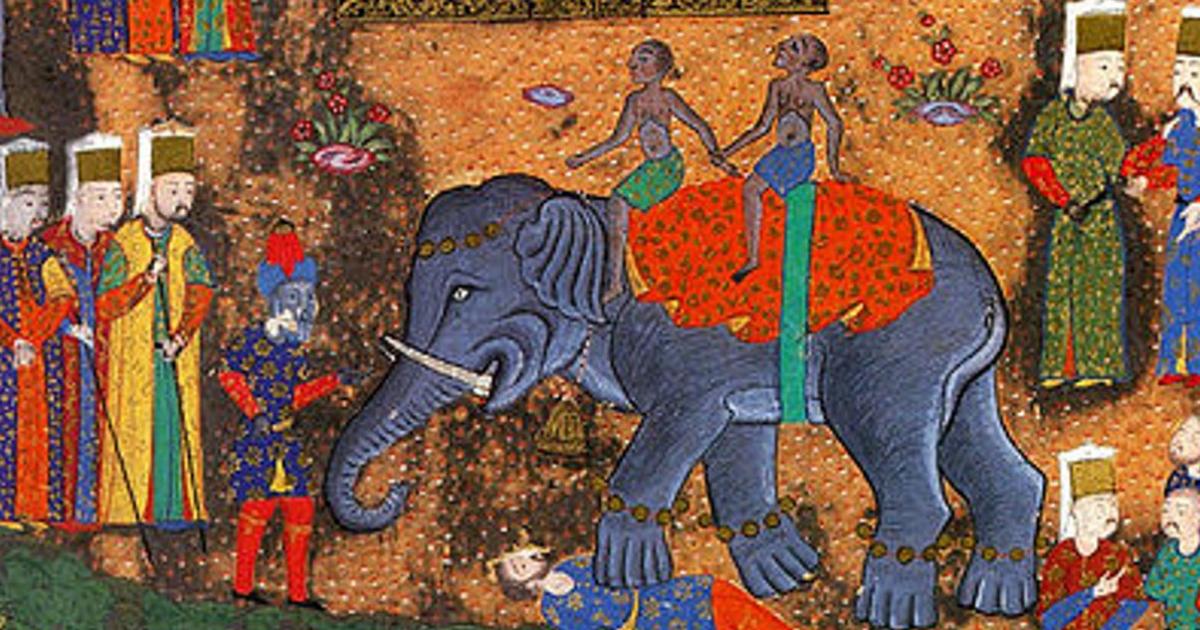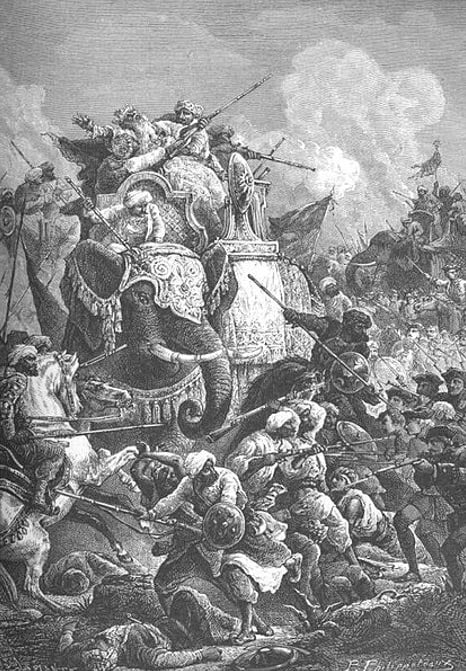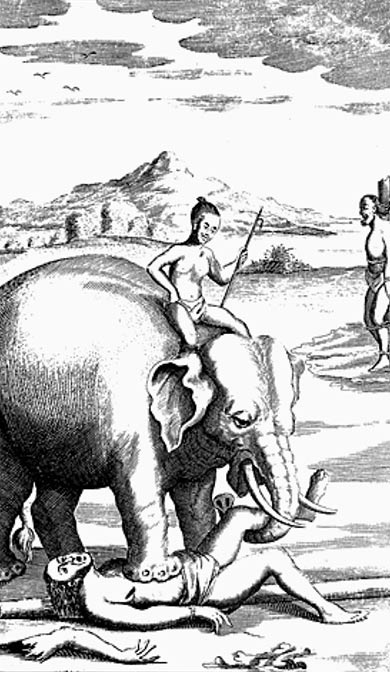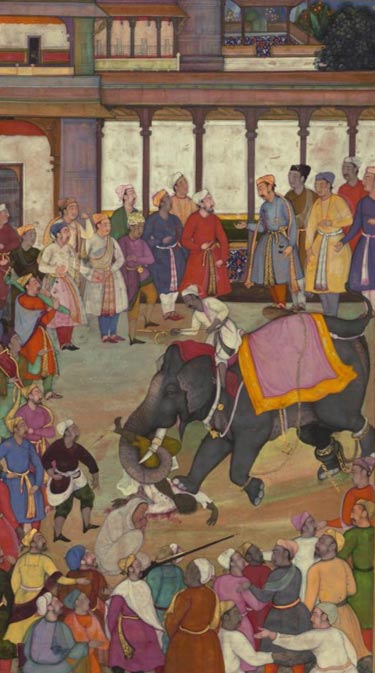
Execution by Elephant: A Gory Method of Capital Punishment
Elephants have played a number of important roles in human history. In some cultures, the elephant is a revered creature. In Buddhism, for example, the vivid dream of Buddha’s mother which foretold her pregnancy had a white elephant in it. Other cultures used the elephant’s great strength and power in battle, or for huge construction projects. There are many examples of these activities - ranging from Hannibal’s crossing of the Alps with his 34 African elephants in 218 BC, to the use of these creatures in the construction of Angkor Wat in the 12th century AD. However, it is perhaps less well-known that elephants were also used as deadly executioners.
Execution by Elephant in Different Societies
Execution by elephant was a form of capital punishment and a weapon of war for certain societies of the past. This method of punishment was occasionally used in the Western world, as several examples can be found in the ancient sources. For example, in the Historiae Alexandri Magni, the Roman historian Quintus Rufus Curtius wrote:
“Then Perdiccas, seeing them paralyzed and in his power, separated from the rest about thirty who had followed Meleager when he rushed forth from the first assembly which was held after the death of Alexander, and in the sight of the whole army cast them before the elephants. All were trampled to death by the feet of the beasts…”

War elephants in battle during the Carnatic Wars by Paul Philipoteaux. (Public Domain)
Nevertheless, this was not a common method of execution in the West. On the other hand, execution by elephant was more frequently used in South and Southeast Asia, especially in India. This form of capital punishment is known also as gunga rao, and has been used since the Middle Ages.
- Unsolved Mystery: Where did Hannibal get his War Elephants?
- Elephant Tomb Discovered in Spain May Have Been a Temple to the God Mithras
- Bestiary, The Book of Beasts: Compendiums of Medieval Monsters and Moral Lessons
- The brutal Draconian laws of ancient Greece
The popularity of this mode of execution continued into the 19th century, and it was only with the increasing presence of the British in India that the popularity of this brutal penalty went into decline.

Illustration of execution by elephant in 1681 by Robert Knox. (Public Domain)
Purpose and Methods of Execution by Elephant
The most common way that the execution by elephant was carried out was for the beasts to crush its victim to death with brute force. Apart from enemy soldiers, civilians who commit certain crimes could also be punished in this way. These crimes included theft, tax evasion and rebellion. There are many wild beasts that could be used to kill a criminal – tigers, lions, crocodiles, snakes, etc. Yet, the choice of the elephant shows that there was something unique about this creature.
Compared to many other wild animals, the elephant is considered to be a smart and easily trainable. In addition, elephants could also be taught to torture criminals, or to execute them slowly. As an example, an elephant could be commanded to break a criminal’s limbs before ending his suffering by crushing his skull.
Another example can be found in the account of François Bernier, a French traveler who witnessed an execution by elephant in Delhi during the reign of the Mughals. According to the Frenchman, the elephants were trained to slice criminals to pieces with “pointed blades fitted to their tusks”. Furthermore, the training of elephants could be used as a means of demonstrating a ruler’s control over the forces of nature.

A Mughal depiction of an execution by elephant. (Public Domain)
Execution by Elephant in other Asian Countries
Apart from India, execution by elephant was also practiced in some other Asian countries. Like India, it was the elephant’s intelligence and brute force that were exploited to execute criminals. Yet, there were some variations in the method of execution. In neighboring Sri Lanka, for instance, elephants used during these events were said to have been fitted with sharp tips on their tusks. Instead of slicing their victims, the elephant would stab its victim, and then ‘rearrange’ its victim’s internal organs.
In the former Kingdom of Siam (now Thailand), elephants were trained to toss their victims into the air before crushing them to death. In the Kingdom of Cochinchina (southern Vietnam), on the other hand, criminals were tied to a stake, whilst an elephant would charge into them, and crush them to death.
This form of capital punishment was brutal and terrifying. It also demonstrates the strength and power, as well as importance, that elephants had for past societies. Not only were the great beasts revered in many cultures, but also they were used (as many animals in the past) to complete deadly and destructive tasks.

A royal white elephant in a Thai painting from the Vessantara Jataka. (Walters Art Museum) Elephants were also revered in many ancient cultures.
Featured image: 16th Century depiction of execution of a prisoner by Ottoman soldiers. Photo source: Public Domain
By: Ḏḥwty
References
Elephantvoices, 2015. Elephants in history and culture. [Online]
Available at: http://www.elephantvoices.org/elephants-in-captivity-7/-in-history-a-culture.html
Marie R, 2014. Execution by Elephant: Ancient Capital Punishment in India. [Online]
Available at: http://www.weirdasianews.com/2014/08/31/execution-elephant-ancient-capital-punishment-india/
Panji Samodro, 2013. Death Penalty Executions Conducted by Elephant. [Online]
Available at: https://medium.com/unique-and-culture/death-penalty-executions-conducted-by-elephant-54d851a081d1#.xv2rfywts
Pegg, D., 2011. 25 of Humanity’s Most Brutal Methods of Execution. [Online]
Available at: http://list25.com/25-of-humanitys-most-brutal-methods-of-execution/
Quintus Rufus Curtius, History of Alexander: Vol. II [Online]
[Rolfe, J. C. (trans.), 1946. Quintus Rufus Curtius’, History of Alexander: Vol. II.]
Available at: http://babel.hathitrust.org/cgi/pt?id=mdp.39015008158407;view=1up;seq=1















